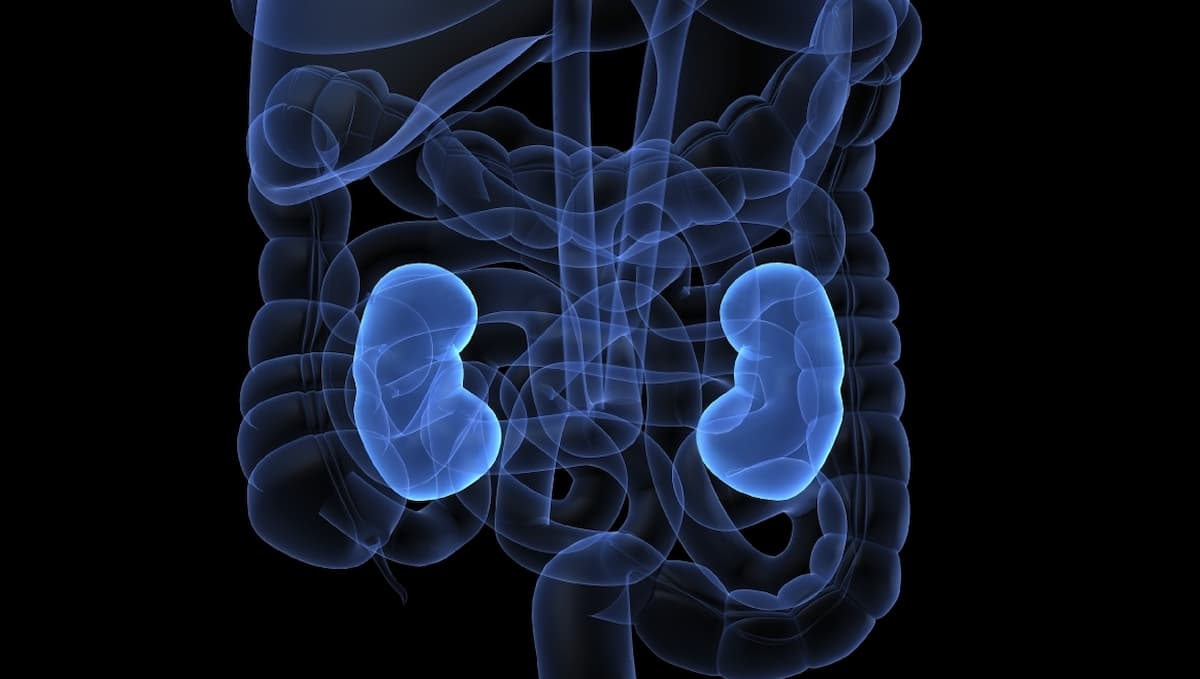Stereotactic Radiation Appears Effective in Primary Renal Cell Cancer
Findings from a phase 2 trial highlight an acceptable adverse effect profile and renal function with stereotactic ablative body radiotherapy in primary renal cell cancer.
"Given the absence of other potentially curative options for patients who are inoperable with larger tumors or a location not amenable to thermal ablation, SABR can be considered a proven modality," according to the study authors.

Treatment with stereotactic ablative body radiotherapy (SABR) resulted in no observed local failures or cancer-related deaths among patients with primary renal cell cancer (RCC), according to findings from the phase 2 FASTRACK II trial (NCT02613819) published in The Lancet Oncology.
With a median follow-up of 43 months (IQR, 38-60), the 12-month local control rate was 100% (P <.0001). Additionally, cancer-specific survival was 100%, and the rate of freedom from distant failure at 12 months and 36 months after beginning treatment was 97% (95% CI, 89%-99%). SABR produced an overall survival (OS) rate of 99% (95% CI, 90%-100%) at 12 months and 82% (95% CI, 70%-89%) at 36 months after beginning study treatment.
The estimated glomerular filtration rate (eGFR) was 61.1 mL/min per 1.73 m2 (95% CI, 56.5-65.6) at baseline, which decreased by 10.8 mL/min per 1.73 m2 (95% CI, –13.1 to –8.5) at 12 months and decreased by 14.6 mL/min per 1.73 m2 (95% CI, –17.1 to –12.1) at 24 months. Split function for the ipsilateral kidney was estimated to be 50% (95% CI, 47%-53%) at baseline, 36% (95% CI, 33%-39%) at 12 months, and 33% (95% CI, 30%-37%) at 24 months.
Only baseline eGFR correlated with subsequent decline in renal function at 12 months with an average reduction of 8.4 mL/min per 1.73 m2 at 12 months per 10 mL/min per 1.73 m2 lower baseline eGFR based on multivariate analysis (P <.0001).
“The excellent oncological outcomes after SABR for primary renal cell cancer observed with this multicenter clinical trial are concordant with those reported in the prospective and retrospective literature,” Shankar Siva, MBBS, PhD, FRANZCR, a professor in the Department of Radiation Oncology at Peter MacCallum Cancer Centre in Melbourne, Australia, and coauthors wrote.
“Given the absence of other potentially curative options for patients who are inoperable with larger tumors or a location not amenable to thermal ablation, SABR can be considered a proven modality. Furthermore, given the increasing incidence of renal cell cancer, the non-invasive nature of SABR, and demonstrated efficacy, we propose that the findings of FASTRACK II should be considered for escalation to a randomized controlled trial of surgery versus SABR as the primary treatment modality in operable patients.”
Investigators of this international phase 2 study assessed 70 patients across 7 treatment centers in Australia and 1 center in the Netherlands. Patients received SABR at 26 Gy as a single fraction for tumors that are 4 cm or smaller in maximum diameter (n = 23) or at 42 Gy in 3 fractions for tumors more than 4 cm to 10 cm in maximum diameter (n = 47).
The trial’s primary end point was local control, which investigators defined as no progression of primary renal cell cancer based on RECIST v1.1 criteria. Secondary end points included OS, cancer-specific survival, freedom from distant failure, safety, and changes in renal function over time.
Patients 18 years and older with biopsy-confirmed solitary primary renal cell cancer who were considered inoperable or at high risk of surgical complications were able to enroll on the study. Additional eligibility criteria included having an ECOG performance status of 0 to 2. Those with an eGFR of less than 30 mL/min per 1.73 m2 before treatment were ineligible for enrollment.
The median age was 73 years (IQR, 66-80) for patients who received single-fraction SABR and 78 years (IQR, 71-82) for those who received 3 fractions of radiation. In each respective group, most patients were male (61% vs 74%) and had an ECOG performance status of 1 (39% vs 47%). The median tumor maximal dimension was 3.3 cm (IQR, 3.0-3.6) vs 5.3 cm (IQR, 4.6-6.0), the median tumor volume was 16 mL (IQR, 11-19) vs 58 mL (IQR, 42-88), and the median Charlson comorbidity index score was 6 (IQR, 5-6) vs 8 (IQR, 6-9).
Grade 3 treatment-related adverse effects (TRAEs) occurred in 10% of patients, which included nausea and vomiting (4%); abdominal, flank, or tumor pain (6%); colonic obstruction (3%); and diarrhea (1%). Additionally, grade 1/2 TRAEs affected 74% of patients. There were no grade 4 TRAEs or deaths that were related to treatment or cancer.
Reference
Siva S, Bressel M, Sidhom M, et al. Stereotactic ablative body radiotherapy for primary kidney cancer (TROG 15.03 FASTRACK II): a non-randomised phase 2 trial. Lancet Oncol. 2024;25(3):308-316. doi:10.1016/S1470-2045(24)00020-2.